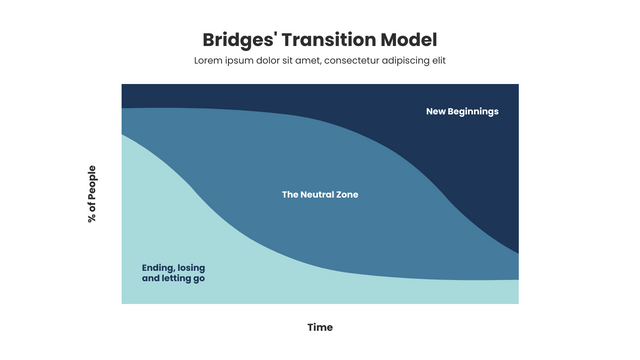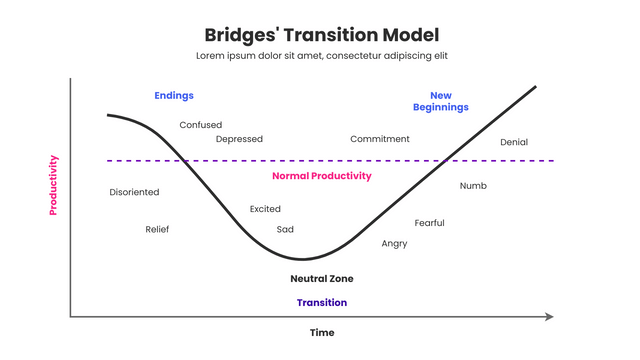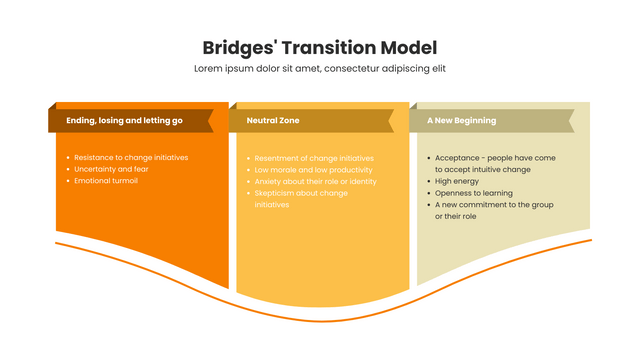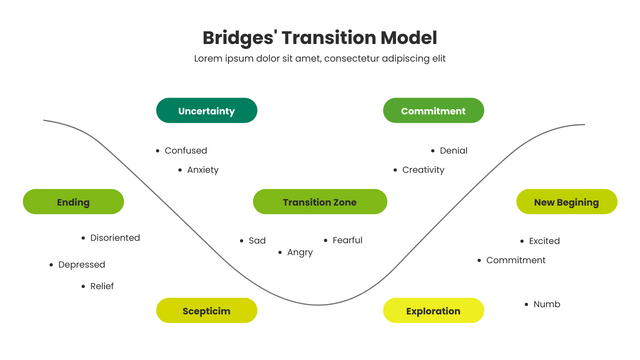What is Bridges Transition Model? Change vs Transition Explained
The Bridge Transition Model, which focuses on transition rather than change. The idea of focusing on transition rather than change is not only a matter of wording, but it also devises an entirely different approach to change management.
Change vs Transition
Change is an external event or situation that occurs: a new business strategy, a leadership shift, a merger or a new product. The organization focuses on the desired outcome that the change will produce, which is usually a response to an external event, and the change can happen quickly.
Transition is the internal psychological process people go through as they internalize and adapt to new situations brought about by change. A good leader anticipates that change can lead people into crisis. The starting point for dealing with transitions is not the outcome, but the end of people leaving the old situation behind.
So change is an event, but transformation is the process you go through in response to change.
What is Bridge Transition Model?
Transition is about letting go of the past and taking up new behaviors or ways of thinking
– William Bridges (book: Managing Transitions)
Only when leaders and organizations solve the transformation problems encountered by people in the process of change can change succeed. If the change is to be carried out as planned, the key is to support people to realize the transformation, rather than forcibly complete the transformation. This is the key to taking advantage of innovation opportunities and creating organizational flexibility.
It does this by detailing the three stages of transition, each of which must guide employees to make the change successful:

Edit this Bridges Transition Model Template
- Ending (Help people to ‘let go’ of the old ways) – The first and most critical factor is this: recognize that in any change, there will be losses.
- Neutral Zone (Help people make the ‘journey’) – People explore new ways of being. They learn new things, create new processes, and begin to move toward new beginnings. During this phase, people may feel lost, frustrated, rewarded, and exhilarated.
- A New Beginning (Encourage commitment to new future) – People accept that they can be part of a process of change, a complete transition to a new reality. The main purpose here is to enhance the results of change and to maintain clarity of purpose and speed of achievement.

Edit this Bridges Transition Model Template
Bridge Transition Model Templates and Examples

Edit this Bridges Transition Model Template

Edit this Bridges Transition Model Template


